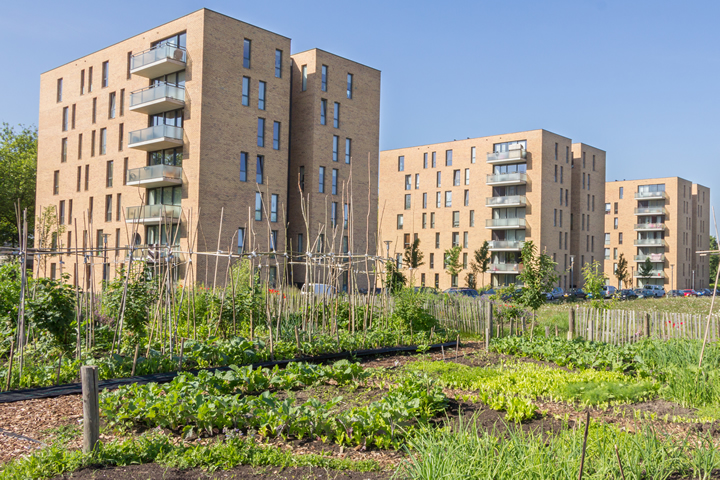Design Considerations for Urban Agriculture Projects

Urban agriculture is one of the most revolutionary design trends, providing solutions to numerous problems. Metropolitan food scarcity, urban heat islands and lack of green spaces are a few problems plaguing cities that embedded agriculture can alleviate. Modern solutions leverage existing spaces to make them adaptable and relevant to current populations, making them healthier and more eco-friendly simultaneously.
Rooftops
Farmers and ranchers must see the value in a city’s flat rooftops for fostering a flourishing microclimate. Before constructing beds and depositing soil, they should consider the roof’s structural integrity and age. If it is old and made with antiquated, fragile materials, the weight of soil, vegetation and water could cause a cave-in.
Additionally, a roof is exposed to unique climate pressures, such as higher winds and more brutal sun exposure. Professionals react to these circumstances by:
- Installing water management like drip irrigation systems.
- Seeking roof inspections and replacements as necessary.
- Incorporating windbreaks and shade infrastructure to protect rooftop wildlife.
Vacant Lots and Buildings
Many vacant offices cannot support modern housing due to irrelevant and outdated codes. Instead of demolishing and rebuilding them, using copious materials and emitting pollutants, farmers can transform them into food-producing havens.
However, abandoned structures have several safety and environmental concerns. The layout may not be ideal, and the site could have a bad reputation in the community. Therefore, urban agricultural experts are responsible for revising its image.
First, they can test lots to ensure available soil is ready for planting. If it is beyond repair, raised beds are a perfect intermediary solution while working to remediate sections a little at a time. Second, workers can employ permaculture principles to optimize planting areas, making it easy for all community members to access the plots. Finally, marketing will be required to rewrite the venue’s public perception. Take plenty of photos of the recovery process, showing how beautiful it is for the community to restore vacant areas.
Vertical Farms
Aeroponics and hydroponics are some of the most malleable urban agriculture integrations. They are low maintenance, primarily when combined with smart remote monitoring systems. They can also automatically optimize LED grow lights to promote productive growth cycles. These and other advanced technologies might be necessary if the space is not well-insulated or poorly lit.
Though vertical farms can happen in many structures, modular construction is a rapidly developing trend for its sustainability boons and inexpensive assembly. When vertical farms can be in retrofitted storage units or commercial facilities, managing the climate for optimal water health and yield production is critical. Install sensors, lights and HVAC systems to gauge temperature, humidity and air quality to preserve perishable food products, no matter what materials make up the building.
Urban Brownfields
Brownfields are usually too contaminated to support agriculture, but many areas near urban centers are affected by industry. With attentive care and thorough assessment, they can be salvageable. Farmers should seek local environmental experts and soil assessors to discover what the earth contains, whether oil or metals.
Much like an abandoned lot, phytoremediation strategies could be available to restore the soil, but it may also be impossible. Depending on the results, agriculturalists might engage with community partners to raise money and awareness on brownfield restoration and contaminant extraction.
School Yards
Schools have countless unused acres of land to support urban agriculture. The primary design consideration is ensuring the crops are accessible to all students. The terrain should be maneuverable by all and considerate of all backgrounds, demographics and needs of diverse city populations. Farmers should work with curriculum planners to incorporate the urban farm into lesson plans, incentivizing students to learn about native species and get into nature.
Urban Agriculture Anywhere
Urban agriculture is not picky, and creative minds should incorporate it in as many locations as possible to assert how versatile and impactful it is on city-dwelling populations. Buildings and lots are opportunities for expanding food access and getting urbanites back into nature. The integrations will spark new standards for metropolitan infrastructure while connecting with a new generation of environmental stewards.
Comments (0)
This post does not have any comments. Be the first to leave a comment below.
Featured Product

